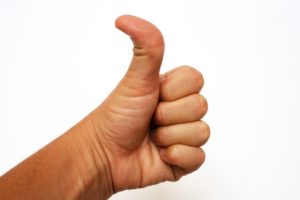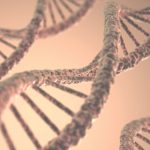 Ehlers-Danlos syndrome (EDS) is a group of inherited tissue disorders that affect the skin and the joints. Symptoms of Ehlers-Danlos syndrome stem from defects in connective tissues that support the skin, bones, blood vessels, and other organs and tissues in the body. Symptoms can be mild, severe or life-threatening.
Ehlers-Danlos syndrome (EDS) is a group of inherited tissue disorders that affect the skin and the joints. Symptoms of Ehlers-Danlos syndrome stem from defects in connective tissues that support the skin, bones, blood vessels, and other organs and tissues in the body. Symptoms can be mild, severe or life-threatening.
There is no cure for Ehlers-Danlos syndrome, but there are treatments to better help manage symptoms. The typical treatment is a combination of physical therapy and medication.
Advertisement
Prior to 1997, there were 10 types of Ehlers-Danlos syndrome categorized by Roman numerals. In 1997, the classification system of the different types of EDS became simpler and the types were given descriptive names instead.
Types of Ehlers-Danlos syndrome (EDS)
As mentioned, classification of Ehlers-Danlos syndrome has since been simplified into six different types. The six types of Ehlers-Danlos syndrome include:
Classical type (formerly types I and II) – type V collagen is affected and type I, resulting in occasional organ fragility.
Hypermobility type (formerly type III) – most wide-spread type in which a biochemical collagen has not been identified.
Vascular type (formerly type IV) – structural defects in the proa1 (III) chain of collagen type III and encoded by the COL3A1 gene. Characterized by fragile arteries, intestines, and other internal organs.
Kyphoscoliosis type (formerly type VIA) – deficiency of lysyl hydroxylase (procollagen-lysine 5-dioxygenase, or PLOD), which is a collagen-modifying enzyme. Very rare form of EDS characterized by fragility of eyes and arteries. Can be diagnosed by urine test.
Arthrochalasia type (formerly types VIIA and VIIB) – mutations leading to deficient processing of the amino-terminal end of proa1(I) [type A] or proa2(I)[type B] chains of collagen type I. Very rare form, can be diagnosed by skin biopsy.
Dermatosparaxis type (formerly type VIIC) – deficiency of procollagen I N-terminal peptidase. Also very rare, and can be diagnosed by skin biopsy, too.
Symptoms of Ehlers-Danlos syndrome
Ehlers-Danlos syndrome affects the connective tissues and joints, and so skin may have abnormal scaring and may feel loose, rubbery, fragile, soft, velvety, and stretchy. Joint may feel overly flexible because the connective tissue is looser and, as a result, joints may move well past their normal range of motion.
Skin, too, will be exceptionally stretchy, and you can pinch and pull it. Even by stretching and pulling it away, it will snap back into place once released.
Symptoms are generally the same across all types of Ehlers-Danlos, but vascular Ehlers-Danlos patients tend to have thinner noses and lips, smaller earlobes, and predominant eyes. Their skin may be translucent, and they bruise fairly easy. Blood vessels may also be visible in patients with fair skin.
In vascular Ehlers-Danlos, the heart’s largest artery can become weak as well as many other arteries in the body. A rupture of any of these arteries can be fatal.
Ehlers-Danlos syndrome (EDS) causes and inherited pattern
 Ehlers-Danlos syndrome is inherited, and so it is passed down in families. In all of its types, Ehlers-Danlos syndrome is caused by mutations in genes such as COL5A1, TNXB, COL3A1, PLOD1, COLD5A2, and COL1A1, just to name a few involved.
Ehlers-Danlos syndrome is inherited, and so it is passed down in families. In all of its types, Ehlers-Danlos syndrome is caused by mutations in genes such as COL5A1, TNXB, COL3A1, PLOD1, COLD5A2, and COL1A1, just to name a few involved.
Some types of Ehlers-Danlos syndrome are passed on through what is known as autosomal dominant pattern, which means one copy of the mutated gene in a cell is enough to pass it on. In other types, it is passed on through autosomal recessive pattern, where two copies of the genes in a cell are required in order to pass it on.
Ehlers-Danlos syndrome (EDS) treatment and home remedies
As mentioned, there is no cure for Ehlers-Danlos syndrome, but treatment is available to help manage symptoms. Medications can be taken to treat pain and blood pressure issues. As veins and arteries can be more fragile in EDS, keeping blood pressure down can help prevent complications and ruptures.
Physical therapy is also beneficial in the treatment of EDS to help strengthen joints and bones as they are far more likely to dislocate. Physical therapy helps stabilize joints in order to prevent dislocation.
In rare cases, surgery may be required to fix dislocations or the damage done to the joints. Surgery does pose many risks, though, as the skin may not heal normally.
Home remedies and advice to keep in mind if you have Ehlers-Danlos syndrome is to choose sporting and exercise activities wisely to reduce your risk of injury. Also, avoid chewing gum, ice, or hard candy in order to protect your jaw joints. Lastly, if you choose to play a musical instrument, avoid those that require breathing into them, as you may find yourself easily winded. String instruments, drums, and the piano are far better options.
Related Reading:
Protect your joints by avoiding this
Much research has come out regarding the negative effects of a sedentary lifestyle and prolonged sitting. From cardiovascular issues to obesity and even diabetes, it seems that a sedentary lifestyle can set you up for a number of health conditions. Continue reading…
Advertisement
Hemophilia increases risk of joint diseases, bleeding into joints
Hemophilia, a disorder that makes it difficult for the body to control blood clotting, can increase the risk of joint diseases and bleeding into joints. For some time now, doctors who treat people with hemophilia have noticed that adults with severe cases of the blood clotting disorder experience joint diseases. Continue reading…
Sources:
http://ghr.nlm.nih.gov/condition/ehlers-danlos-syndrome
https://www.nlm.nih.gov/medlineplus/ehlersdanlossyndrome.html
http://www.ednf.org/eds-types
http://www.mayoclinic.org/diseases-conditions/ehlers-danlos-syndrome/basics/symptoms/con-20033656
